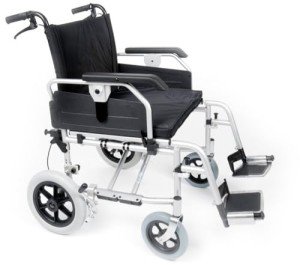10 Facts About Lightweight Bariatric Transport Wheelchair That Will Instantly Put You In An Optimistic Mood

Bariatric Transport Wheelchair
Developed to be pressed by caretakers, transport chairs feature smaller front wheels and larger rear wheels. They are a popular option for users with restricted mobility who can not stroll independently.
When searching for a lightweight bariatric transport wheelchair, consider the user's needs and how they'll use the chair. Also, determine any doorways and other areas the chair will travel through.
Seating
Bariatric transport chairs feature a big 22 to 36 inch broad seating area that accommodates extra-large users. The chair seat is made from breathable nylon and comes with cushioned arms that can be gotten rid of and swing-away footrests. Unlike standard wheelchairs, which are perfect for typical body weights, bariatric chairs have much heavier frames built from enhanced materials and larger rear wheels that make it much easier to push them. Talk to bariatric wheelchair 600 lb capacity to get more information about your options and to determine which type of wheelchair is best for you. Bariatric wheelchairs are typically covered by insurance providers like Medi-Cal if your medical condition satisfies their protection requirements.
Frame
Bariatric transport wheelchairs utilize heavy-duty frames made of reinforced products like steel and have wider seats than basic wheelchairs. They are developed for people with greater body weights and can hold an optimum weight capacity of 700 pounds. They likewise have bigger rear wheels, that make them easier for caretakers to push. Bariatric wheelchairs are frequently covered by insurance coverage such as Medi-Cal, depending upon the client's particular medical needs and medical diagnosis. Ask a healthcare professional or mobility specialist to help pick the right chair for your special requirements.

Click here for more details. Medline Bariatric Transport Chair. Deep Red Hammertone Frame.
Weight
While basic wheelchairs have lighter frames and smaller wheels, bariatric transport chairs include heavier-duty materials and a broader seat to accommodate users who weigh more than average. Since of their specialized design and building and construction, they tend to cost more than basic chairs. However, some insurance programs like Medicare and Medi-Cal might cover the cost of these chairs if the user meets the criteria for protection. For more information about which chair is best for you, contact a rehab professional today.
Wheels
Bariatric transport wheelchairs have larger rear wheels than standard designs, making them simpler to press. They're often used in hospitals and home settings, where the chair is pressed by caretakers. The extra-large rear wheels likewise permit the chairs to browse a range of surface, consisting of outdoors.
Standard wheelchairs typically have smaller sized wheels, that make them more maneuverable indoors however less appropriate for everyday usage on outdoor streets and other surfaces. Mobility professionals suggest seeking advice from a doctor or mobility specialist to choose the finest wheelchair for your specific needs and goals.
This sturdy, nylon strengthened steel transport chair supports patients approximately 500 pounds and features a roomy 22" seat, cushioned desk-length armrests, swing-away footrests and hand brakes. The 12-inch rear wheels ensure a smooth ride in any environment.
